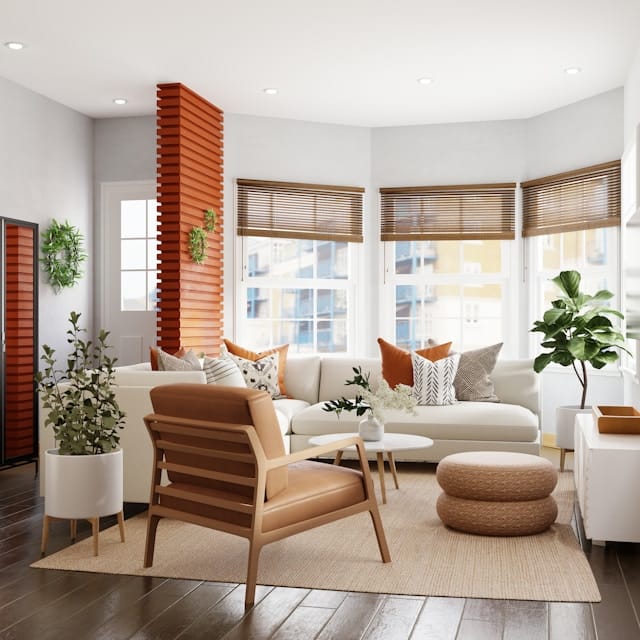The living room is the heart of your home; it’s where you relax, entertain, and spend quality time with loved ones. Today, more and more people are turning to minimalism, a style that values simplicity and function. When executed well, a minimalist living room can not only create a sense of space and light but also have profound benefits for your mental health. If you’re ready to embark on creating a minimalist space that fosters a sense of tranquility and wellbeing, then you’re in the right place.
The Foundations of Minimalism in Interior Design
The first step to creating a minimalist living room is understanding the key principles of minimalist design. Embracing minimalism means doing away with excess and focusing on the essentials. It’s about creating a room with a clean, streamlined look, and using only the items that are necessary for living comfortably.
A voir aussi : What Are the Most Sustainable and Stylish Countertop Options for an Eco-conscious Homeowner?
In minimalist design, each piece of furniture serves a purpose. There’s no room for unnecessary elements or clutter. The color palette is usually composed of neutral tones, which helps to create a sense of calm and order. Natural light is also a crucial element, as it enhances the sense of space and brings a touch of nature into your living room.
Choosing the Right Minimalist Furniture
When it comes to choosing furniture for your minimalist living room, it’s important to keep two things in mind: function and simplicity. The furniture you choose should be practical and should serve a specific purpose in the room.
Dans le meme genre : What Are the Best Soundproofing Options for an Urban Apartment Near a Train Station?
Ideally, every piece of furniture in the room should provide some sort of value, whether it’s a comfortable place to sit, a surface to place items on, or storage space. Moreover, the designs should be simple and streamlined, without any unnecessary ornamentation.
Limiting the amount of furniture in the room also contributes to the minimalist aesthetic, as it helps to create a sense of space. Try to keep only the essentials, like a couch, a coffee table, a couple of armchairs, and perhaps a media unit for your television and other electronics.
Introducing Natural Light and Elements
One of the primary ways to maximize space and create a sense of openness in your minimalist living room is to embrace natural light. Keep your windows unobstructed to let in as much sunlight as possible.
In addition to making the room appear larger and more open, natural light has been shown to have numerous mental health benefits. It can boost your mood, reduce stress, and improve sleep quality.
Furthermore, introduce natural elements into your room. Plants, wooden furniture, and natural textiles can bring warmth to the cold and sterile feel sometimes associated with minimalism.
Creating a Positive Mental Environment
A minimalist living room is not just about creating a stylish and spacious space, but also about fostering a positive mental environment. The simplicity and order inherent in minimalist design can have a profound impact on your mental health.
Psychologists have long recognized that our environment can significantly affect our mood and overall wellbeing. A cluttered room can lead to feelings of stress and anxiety, while a tidy and organized space can promote feelings of calm and relaxation.
By eliminating unnecessary items and keeping only the essentials, you’re creating a room that’s free of distractions. This clean and serene environment can help to reduce stress, increase focus, and improve your overall mental wellbeing.
Keeping Your Minimalist Living Room Clutter-Free
Maintaining a minimalist living room means keeping it free of clutter. This can be a challenging task, especially if you have children, pets, or a penchant for collecting things.
But remember that every item in your living room should serve a purpose. If it doesn’t, it’s likely contributing to clutter. Regularly take the time to de-clutter your space, removing items that no longer serve a purpose or bring you joy.
Embracing minimalism is not about depriving yourself of the things you love, but rather about making room for what’s truly important. By keeping your living room clutter-free, you’re not just creating a space that’s visually pleasing – you’re also creating a space that’s conducive to relaxation and peace of mind.
Incorporating Storage Solutions and Neutral Colors
A well-executed minimalist living room goes beyond just being bare or empty. It carefully incorporates storage solutions that are purposeful and keep the space organized. Keeping your items tucked away reduces visual clutter, which in turn promotes a sense of calm and order.
Storage doesn’t have to be plain or boring. Consider using stylish baskets, shelves, or even furniture with built-in storage space. The key is to utilize pieces that serve multiple functions, thereby saving space and maintaining a clean and uncluttered look.
The color palette is another critical element in minimalist design. Neutral colors are often favored because they contribute to a peaceful and serene atmosphere. Whites, beiges, and grays are typical choices for walls and furniture decor. These colors are known for their ability to create a sense of calm and tranquility in living spaces, which is paramount to enhancing mental well-being.
Integrating a neutral color palette does not mean the living room has to be monotone. You can add depth and interest by varying the textures in your room. You could use a shaggy rug, a smooth leather couch, or linen curtains. These subtle differences in texture can add richness and complexity to a minimalist living room without deviating from the principles of simplicity and functionality.
Conclusion: Reaping the Benefits of a Minimalist Living Room
Embracing a minimalist design for your living room is an investment in your personal tranquility and mental well-being. By prioritizing function, simplicity, and a sense of calm, you are creating an environment that promotes relaxation and reduces stress.
Remember, a minimalist living room is not devoid of character or warmth. On the contrary, it is a carefully curated space that reflects your personal taste. It is a living space that prioritizes natural light, incorporates natural elements, and utilizes a neutral color palette to create a serene and inviting atmosphere.
Furthermore, the streamlined nature of minimalist design makes it easier to keep the room clean and clutter-free, further contributing to your mental well-being. And with fewer items in the room, you are free to invest in quality pieces that truly add value to your space and your life.
Hence, creating a minimalist living room is about more than interior design. It’s about creating a living space that contributes to your mental health and enhances your overall quality of life. So embrace the clean lines, the natural light, and the sense of peace that arise from a minimalist living room. Your mind will thank you for it.











